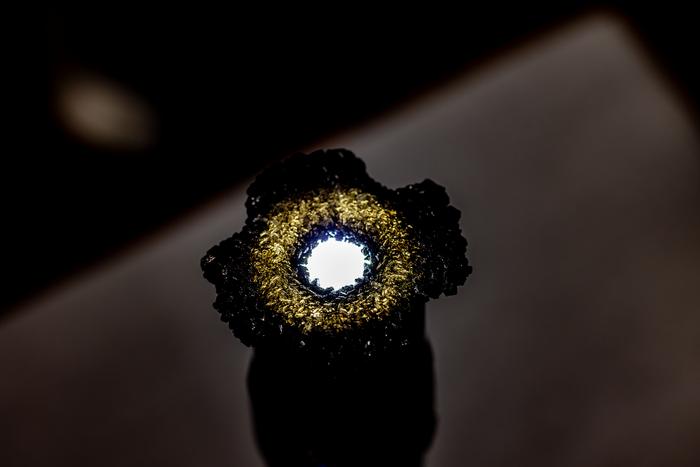The dawn of a new era in semiconductor manufacturing has been catalyzed by groundbreaking projects undertaken at the Princeton Plasma Physics Laboratory (PPPL). These initiatives, backed by a significant investment from the U.S. Department of Energy (DOE), aim to harness the unique properties of lab-grown diamonds and 2D materials for microelectronics. As technology advances, the pressing demand for more efficient and resilient components continues to mount, making these projects not just timely but essential for future innovations in the field.
PPPL has been awarded two prestigious projects as part of the Microelectronics Science Research Center. With an annual funding of $3 million over four years, these projects will explore avenues that traditional materials, like silicon, struggle to address in challenging environments. The thrust of these collaborations lies in leveraging PPPL’s extensive knowledge of plasma processes, which are pivotal in the development of next-generation semiconductors. By collaborating with other national labs, academic institutions, and industry leaders, PPPL seeks to push the boundaries of what’s possible in microelectronics.
Central to this research is the emphasis on extreme environments where traditional electronics often falter. One of the key focuses of the projects is on utilizing lab-grown diamonds for creating sensors and electronic components that can withstand extreme stress. Diamonds possess characteristics like superior thermal conductivity and resilience, which make them promising candidates for applications in various demanding conditions, such as nuclear reactors and aerospace settings. The project aims to evaluate how these properties can be optimized for electronic applications, potentially leading to a new class of robust and efficient sensors.
Another innovative avenue being examined in the PPPL projects is the incorporation of 2D materials into semiconductor devices. As the semiconductor industry approaches its limits with silicon, research into advanced materials like graphene and transition metal dichalcogenides offers groundbreaking potential. These materials are ultra-thin, consisting of just a few atomic layers, yet they exhibit remarkable electrical properties that can revolutionize electronic devices. The integration of these 2D materials into 3D structures could catalyze enhancements in performance, efficiency, and miniaturization of microelectronics.
Leading the charge in this research are esteemed scientists such as Emily Carter and Yevgeny Raitses. Their expertise and vision aim to establish a deeper understanding of material properties at the atomic scale. Carter underscores the critical role these innovations could play across multiple industries, highlighting how microelectronics impact modern life. As advancements unfold, industries ranging from consumer electronics to military applications stand to benefit tremendously from the findings.
In the realm of applications, the creators of high-performance diamond sensors are addressing the technology demands in environments where conventional electronics are inadequate. Alastair Stacey’s part of the research focuses on transistors crafted from diamond, channels through which information flows in circuit designs. Overcoming the technical intricacies associated with diamond as an electronic material is paramount, and the research seeks to unravel how diamond can be used effectively in these applications.
The research also includes a profound focus on high-power electronics, where diamond may exceed silicon’s limitations. For example, rocket thrusters encounter extreme heat and radiation, and the ability of diamond to maintain performance under such conditions signals a shift in material choice for rugged applications. By investigating its potential as a substitute for accepted materials in high-stress environments, the research aims to pioneer a technological leap.
The study will not be carried out in isolation; rather, it assembles a talented group of researchers and collaborations from prestigious institutions like Princeton University, MIT, and other universities. The blend of diverse expertise promises a multidisciplinary approach, providing valuable insights and synergies that will enrich the research outcomes. By identifying points of collaboration and shared knowledge, the team hopes to cultivate a robust research environment capable of tackling complex scientific problems.
These ventures trace their roots to broader governmental initiatives like the CHIPS and Science Act of 2022, emphasizing the importance of energy-efficient microelectronics and robust materials for harsh environments. The initiative recognizes the urgency of maintaining U.S. leadership in semiconductor technology and aims to strengthen partnerships between governmental labs and the private sector.
As the demand for advanced technologies intensifies, so too does the pressure on researchers and engineers to develop solutions that can meet these needs. PPPL’s commitment to exploring these frontiers is evident in its focus on quantum sensing and advanced materials. The establishment of the Quantum Diamond Laboratory at PPPL illustrates a proactive approach in harnessing diamonds for research that could redefine quantum technologies.
In conclusion, the initiatives spearheaded by PPPL mark a significant milestone in the journey toward revolutionary advancements in semiconductor technology. With a dual focus on the unique properties of diamond and innovations in 2D materials, the research promises to unlock unprecedented capabilities in microelectronics. As researchers delve deeper into understanding the utilization of plasma processes, the potential for designing new, resilient electronic devices grows exponentially. The implications for the future are profound, with the promise of not only better-performing semiconductors but also a more sustainable and technologically advanced society.
Subject of Research: Microelectronics Science Research Center projects utilizing lab-grown diamonds and 2D materials for semiconductor applications.
Article Title: The Next Frontier in Semiconductor Technology: Innovations in Diamonds and 2D Materials
News Publication Date: October 2023
Web References: PPPL
References: Department of Energy
Image Credits: Michael Livingston / PPPL Communications Department
Keywords
Semiconductors, Diamond, Microelectronics, Electronic devices, Electronics, Physics.




